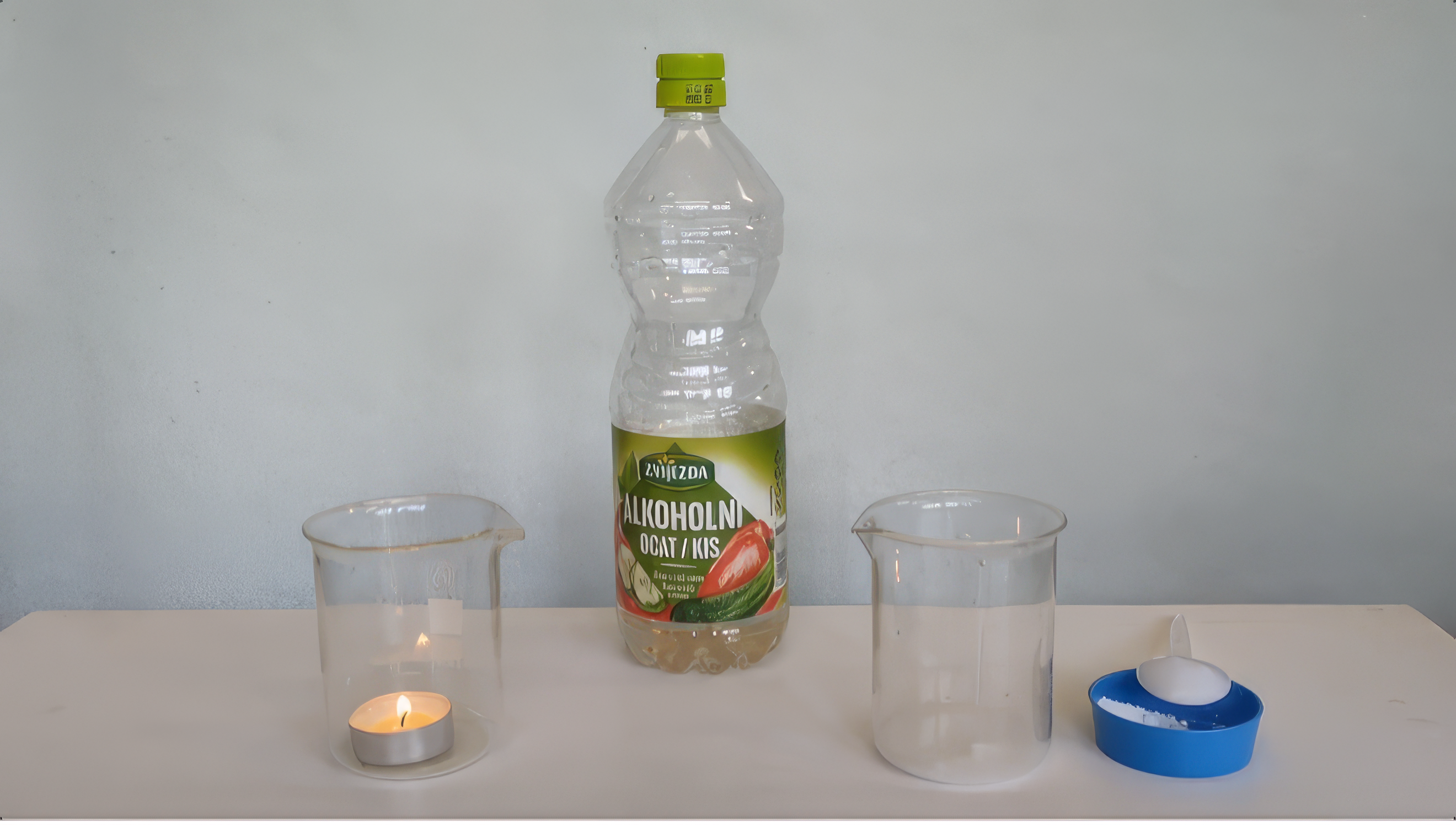The property of fluids is that they flow. Fluids are liquids and gases. Examples of fluids are water, oil, glycerin, alcohol and air. Air is a mixture of various gases – nitrogen, oxygen and other gases. Carbon dioxide (CO2) is also a gas. It is produced during combustion and breathing.
Watch the video carefully.
What do you see?
In this experiment, a chemical reaction takes place between baking soda and vinegar. This produces gas – carbon dioxide.
Baking soda is a white powdery substance with no characteristic smell, which is often used in household purposes (for example, baking).
Oxygen is needed for combustion. When you pour carbon dioxide on a burning candle, you prevent it from getting oxygen. This is why the candle goes out.
Materials: beakers, spoon, cork, baking soda, vinegar, candle, matches
Procedure:
- Put the candle in the first beaker and light it.
- Put a tablespoon of baking soda in the second beaker.
- Add two corks of vinegar to the baking soda.
- Wait for about 15 seconds.
- Pour the resulting gas on the burning candle.
Did your candle go out too? Explain why in your own words.



